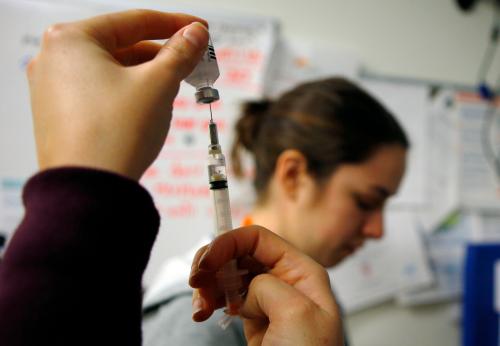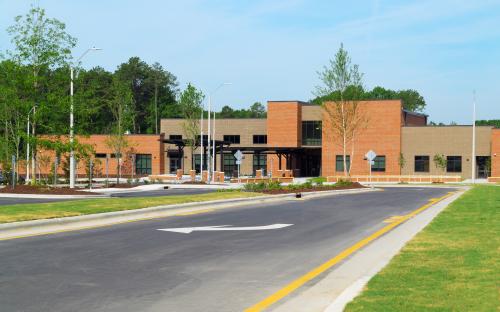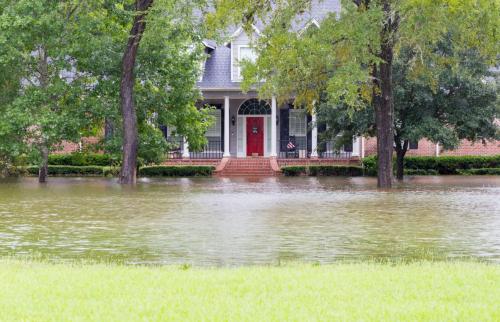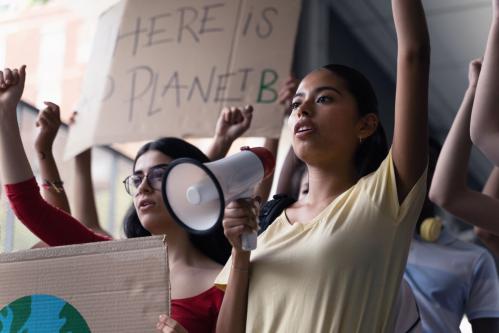Growing gaps in family structure, educational investments, school readiness, test scores, and college entry and completion all make upward economic mobility a more difficult prospect for children born to poor families. Poor children in poor neighborhoods are at an even greater disadvantage. Growing up in an impoverished community doesn’t only affect your lifetime earnings – it can also affect the length of your life. It can even affect the quality of the air you breathe and the water you drink.
Limited income mobility among poor and minority children is often linked to differences in social environment, be it family, peer, school, or neighborhood environment. But income and race are also closely associated to the quality of one’s natural environment. Disparities in exposure to environmental toxins and pollution are more frequently the subject of the natural sciences, but their deep relationship with socioeconomic factors demands greater attention from social scientists. Indeed, a deep body of scientific research shows a strong and persistent relationship between socioeconomic status and exposure to environmental hazards. There is a good case for measuring poverty across multiple dimensions. Perhaps it’s time to start thinking about environmental poverty as an additional dimension of poverty.
Low-income and minority households are more likely to live in neighborhoods exposed to higher levels of water and air pollution.
poverty and pollution
The quality of America’s natural environment has greatly improved since the Clean Air Act was expanded and the Environmental Protection Agency established in 1970. Later legislation, like the Clean Water Act and the Safe Drinking Water Act, established quality standards for our nation’s water resources. Thanks to the enforcement of these laws and other efforts to improve or maintain environmental quality, Americans can worry less (for the most part) that their drinking water might catch fire or that the air they breathe contains dangerous levels of particulate matter (though recent rollbacks in environmental regulations might reverse these trends).
As the residents of Flint, Michigan learned, these risks have not disappeared. They are not the only ones exposed to dangerous levels of pollution or toxins. In 2015, nearly one-quarter of Americans were served by water systems that violated some component of the Safe Drinking Water Act.
Low-income and minority households are more likely to live in neighborhoods exposed to higher levels of water and air pollution.
No surprise, levels of concern over drinking water quality are higher among low-income and minority Americans.
Race and calss gaps in air quality
The ongoing Flint water crisis has drawn national attention to the dismal quality of drinking water systems in certain communities, but similar disparities exist regarding air quality. Low-income communities of color are likely to be exposed to far more pollution:
A 2008 study by Liam Downey and Brian Hawkins showed that lower-income households tend to live in neighborhoods with worse air quality, but the study’s major finding was that, even across income groups, black households are more likely to live in neighborhoods with poor air quality than white households. A more recent analysis demonstrated that toxic air pollution in urban areas was correlated with segregation. That is, the more segregated a neighborhood, the worse its air quality.
toxic for opportunity
These environmental inequalities have social and economic implications. Pollution can have substantial impacts on human health and, relatedly, the economy. Air pollution is a contributor to asthma and other respiratory diseases, which contribute to increased hospital admissions and lost working days. Water pollution increases the risk of bacterial, neurological, and viral infections and can contribute to higher rates of infant mortality. Researchers at the University of Minnesota determined that the average exposure to nitrogen dioxide (NO2), a common outdoor air pollutant, is 38 percent higher among minorities nationwide, and bringing this exposure level down to that experienced by whites would be akin to reducing heart disease mortality by around 7,000 deaths per year. These health impacts can have economic consequences. For example, the social costs of air pollution (which includes the health costs of morbidity and mortality) resulting from domestic energy production alone amounted to $131 billion in 2011 – and that’s a substantial decrease from a decade prior.
There is a tricky game of causation or correlation here (do industrial plants move to low-income neighborhoods because property is cheap, or does their presence lower property values and attract low-income residents?) – but the association is clear and important. Concentrated inequality, segregation, and poverty disproportionately expose residents to environmental pollutants, adding to the list of disadvantages faced by poor and minority Americans.
Environmental health reflects and reinforces economic and racial inequality. There is a deepening understanding of the “social determinants of health,” thanks to the work of scholars like our Brookings colleagues Ross Hammond, Dayna Bowen Matthew, and Stuart Butler. But there are environmental determinants, too, and not only of health but potentially of opportunity. Earth Day is about the environment, of course – but it is also about equity.
The Brookings Institution is committed to quality, independence, and impact.
We are supported by a diverse array of funders. In line with our values and policies, each Brookings publication represents the sole views of its author(s).






Commentary
Earth Day: it is about equity as well as the environment
April 21, 2018